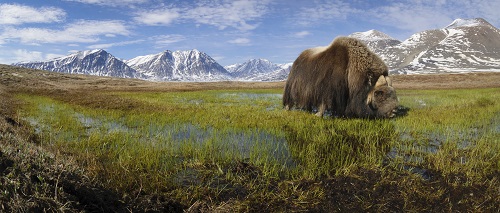Predators and vegetation determine the distribution of herbivores in the Arctic
New research from ARC sheds light on Arctic biodiversity patterns

Biodiversity patterns, or the distribution of animals and plants has always been intriguing biologists. In the harsh Arctic conditions, one would expect that abiotic factors, like the weather conditions, are the major determinant of species distribution.
In a new study, researchers from ARC together with colleagues from as many as eight different countries have studied the distribution of herbivorous bird and mammal species in the High Arctic, Low Arctic and Subarctic.
The results indicate that herbivore species richness in the Arctic is positively related to plant productivity and the species richness of predators. Biotic interactions can thus drive species richness at a biome-wide scale. Furthermore, rapid ongoing environmental changes in the Arctic can affect herbivore diversity through impacts on both primary productivity and changes in predator communities via range expansion of predators from lower latitudes.
Read more about the study in Danish at DR Viden.
Original article: Barrio IC, Bueno CG, Gartzia M, Soininen EM, Christie KS, Speed JDM, Ravolainen VT, Forbes BC, Gauthier G, Horstkotte T, Hoset KS, Høye TT, Jónsdóttir IS, Lévesque E, Mörsdorf MA, Olofsson J, Wookey PA & Hik DS 2016. Biotic interactions mediate patterns of herbivore diversity in the Arctic. Global Ecology and Biogeography DOI: 10.1111/geb.12470
